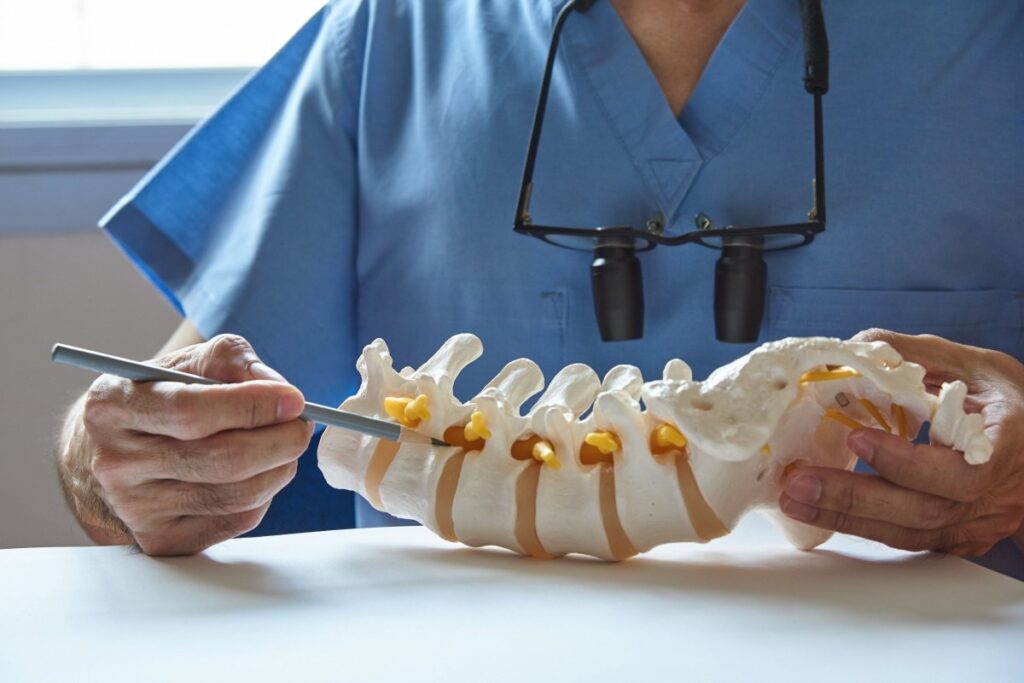Last Updated on October 21, 2025 by mcelik
When a child is diagnosed with a hernia, parents often have many questions. They want to know about the surgery and what to expect during recovery. It’s natural to feel concerned about your child’s health and well-being.
Pediatric hernia surgery, also known as inguinal hernia surgery, is a common procedure. It usually takes between 45 to 70 minutes. But the time can change based on the child’s age and the hernia’s complexity.

Knowing the basics of pediatric hernia surgery and what affects its length is helpful. Recent studies and clinical data offer insights into the surgery and recovery times.Get an overview of the duration for pediatric hernia surgery. Prepare for the process and learn about recovery from inguinal hernia surgery.
Pediatric hernia repair surgery is quick, but its time can vary. We’ll look at the usual times for this surgery. We’ll also talk about recent studies that shed light on what affects its length.
The average time for pediatric hernia surgery is 45 to 70 minutes. Several things can change this time. These include the hernia’s complexity, the patient’s age and size, and whether it’s on one or both sides.
Younger patients or those with complex hernias might need more time. On the other hand, simple cases in older kids might be faster.
A study in JAMA in 2024 gave us new insights. It found that early repairs took 57 minutes on average. Delayed surgeries took about 70 minutes. How long does pediatric hernia surgery take?

This study shows that when you have the surgery can affect its length. Early surgeries might be shorter because they’re less complex.
Knowing these times and what affects them helps parents and caregivers prepare. It makes them understand the surgery and recovery better.
The time needed for pediatric hernia surgery can change a lot. We’ll look at what makes this time vary. This will help us understand the surgery better.
Age and size are key in figuring out how long surgery will take. Infant hernia repairs, like those in newborns, are more complex. This is because their bodies are smaller. As kids get older, the surgery can change, becoming more like adult procedures.
Doctors have to adjust their methods based on the patient’s age and size. This is important for the best results. Below is a table showing how age can affect surgery time.
| Age Group | Average Surgery Duration | Factors Influencing Duration |
| Newborns (0-3 months) | 60-90 minutes | Small anatomy, delicate structures |
| Infants (3-12 months) | 45-70 minutes | Developing anatomy, possible complications |
| Adolescents | 30-60 minutes | Like adult procedures, fewer issues |
The type and where the hernia is also matter. Hernias that are stuck or strangulated need urgent and complex fixes. This can make surgery longer. Also, where the hernia is can change how the surgery is done and how long it takes.
Whether it’s a bilateral or unilateral repair is also important. Bilateral repairs, fixing hernias on both sides, take longer. This is because the surgeon has to work on both sides, making the surgery more complex and time-consuming.
Every patient is different, and their hernia specifics will affect surgery time. By knowing these factors, parents and caregivers can better understand what to expect.
The type of surgery for a child’s hernia can change how long the surgery lasts. We’ll look at the different methods and how they affect the surgery’s length.
The traditional open surgery has been used for hernia repairs for a long time. It involves cutting in the groin to see and fix the hernia. Open surgery is often chosen for its simplicity and clear view of the area. It’s great for babies because of their small size.

Laparoscopic hernia repair is becoming more popular because it’s less invasive. It uses small cuts for a camera and tools to fix the hernia. Laparoscopic surgery can lead to less pain and quicker healing. It’s used in more than half of pediatric cases, with good results.
Procedure times vary between open and laparoscopic surgery. Open surgery might be quicker for simple cases. But laparoscopic surgery can mean less pain and quicker recovery. The complexity of the hernia and the surgeon’s skill also play a role. Swelling in the testicles after surgery is a concern for all surgeons.
In summary, choosing between open and laparoscopic surgery depends on several factors. These include the patient’s age, the hernia’s complexity, and the surgeon’s experience. Understanding these can help parents prepare for their child’s surgery and recovery.
The timing of pediatric hernia surgery is very important. It depends on the type of hernia. Whether the hernia is reducible or strangulated determines how urgent surgery is.
A strangulated hernia is a serious emergency. It happens when a hernia cuts off blood to the intestine. This can cause tissue damage. We suggest surgery within 12 hours to avoid serious problems.
Key considerations for strangulated hernias include:
For reducible hernias, surgery timing is more flexible. But we recommend scheduling surgery as soon as possible. This helps avoid the risk of the hernia becoming trapped or strangulated.
| Hernia Type | Recommended Surgical Timing |
| Strangulated Hernia | Within 12 hours |
| Reducible Hernia | As soon as reasonably possible |
Waiting too long to have surgery for pediatric hernias can lead to more problems. Studies show that early surgery lowers the risk of complications. This is good for children’s health.
A study in the Journal of Pediatric Surgery found that waiting too long to have surgery increases complications.
Infant and newborn hernia surgery needs careful planning. This is because of their unique body features. We aim to meet their specific needs for the best results.
Surgery for inguinal hernias in 2-month-old babies is very delicate. Premature babies usually have surgery at about 60 weeks corrected age. This timing is thought to lower the risk of problems. We look at the baby’s health, weight, and any other health issues when planning the surgery.
There are several important things to consider when fixing an infantile inguinal hernia. Laparoscopic techniques are getting more popular because they are less invasive. This can mean a faster recovery. But the choice between open and laparoscopic surgery depends on the surgeon’s skills and the hernia’s details.
Age is a big factor in deciding when and how to fix a pediatric inguinal hernia. For newborns and young babies, surgery is often urgent if the hernia is trapped or cut off. If the hernia can be pushed back, the timing can be more flexible, allowing for better planning.
We know every baby is different. The decision on when and how to do hernia surgery must fit the child’s needs. Our team works with parents to give personalized care and advice every step of the way.
We guide you through what to expect during your child’s recovery from inguinal hernia surgery. As a parent, it’s natural to have concerns about your child’s recovery process. Understanding the typical recovery timeline and possible complications can help ease these worries and ensure a smooth recovery.
The immediate recovery period after inguinal hernia surgery usually involves a short stay in the hospital or surgical facility. Most children can go home the same day, usually within a few hours after the procedure. During this time, medical staff will watch over your child for any immediate complications and manage pain.
Once home, parents should keep an eye on their child’s pain levels. Make sure any discomfort is managed with the prescribed medication. It’s also key to follow the surgeon’s instructions on post-operative care, including wound care and follow-up appointments.
One common complication after inguinal hernia surgery is testicular and scrotal swelling. This swelling is usually temporary and can be managed with proper care. Applying ice packs to the affected area, as directed by your surgeon, can help reduce swelling. In some cases, elevating the scrotum may also be recommended.
It’s important for parents to watch the swelling and report any concerns to their child’s healthcare provider. While some swelling is normal, severe or persistent swelling may need medical attention.
Tips for Managing Swelling:
The complete recovery timeframe varies significantly based on the child’s age. Generally, younger children recover more quickly than older children or adolescents.
For infants and younger children, full recovery usually happens within a few weeks. Older children and adolescents may need a bit more time, typically recovering in 4-6 weeks. It’s important to follow the specific guidance provided by your child’s surgeon, as individual recovery times can vary.
By understanding the recovery process and what to expect, parents can better support their child through this period. This ensures a successful outcome from inguinal hernia surgery.
Recovery for kids with hernia surgery needs careful pre- and post-care. We’ll guide you through this process. It’s all about preparing well and following up closely for the best results.
Before surgery, we take several steps to get your child ready. Pre-surgical preparations include a detailed medical check to spot any risks. We tell parents to stop food and drinking 6 hours before surgery to reduce anesthesia risks.
Telling us about your child’s medications is also key. We might adjust or stop some to make the surgery smoother.
“The key to a successful surgery lies in thorough preparation and clear communication between the healthcare team and the family.”
The time in the hospital varies based on the surgery and your child’s health. Most hernia surgeries in kids are short, with often the same-day discharge.
But younger kids or more complex surgeries might need a longer stay. We’ll talk about how long your child will stay based on their needs.
After going home, home care is vital for your child’s healing. Keep the incision clean and dry to avoid infection. Watch for any signs of trouble like fever, redness, or swelling.
It’s best to avoid hard work and heavy lifting for a few weeks. We’ll give you specific advice on what activities are okay and when to come back for check-ups. This helps your child recover smoothly.
By following these steps and staying in touch with our team, you can help your child recover well.
Knowing how long pediatric hernia surgery takes is key for parents. We’ve looked at what affects surgery time, like the child’s age and the type of hernia. We also talked about different surgical methods.
Parents can prepare better for their child’s surgery by understanding these factors. We’ve shown how some surgeries, like laparoscopic ones, are quicker and safer. This is important for kids with serious hernias.
We want to help parents make the best choices for their child’s surgery. Good care before and after surgery is vital for a quick recovery. By being informed, parents can help their child get back to normal fast. We’re here to support you every step of the way.
Pediatric inguinal hernia surgery usually lasts between 45 to 70 minutes. This depends on the child’s age, the hernia’s complexity, and if it’s bilateral or unilateral.
Recovery time varies by age. Kids can usually get back to normal activities in a few days to a week. Full recovery might take a few weeks.
Yes, it’s safe for newborns and infants when done by skilled pediatric surgeons. They consider their age and size carefully.
Surgery for a strangulated hernia is urgent. It should happen within 12 hours to avoid serious problems.
Common issues include swelling in the testicles and scrotum. These usually get better with proper care and time.
Recovery time depends on age. Younger kids tend to heal faster than older ones.
Open surgery uses one incision, while laparoscopic repair uses small incisions and a camera. Laparoscopic might have quicker recovery, but it isn’t for all cases.
Yes, many surgeries are done on an outpatient basis. This means the child goes home the same day.
Preparations include a medical check-up, lab tests, and fasting instructions. You’ll also get care guidelines.
Managing pain includes medication from the surgeon, rest, and watching for any complications.
Long-term risks are low when done by experienced surgeons. But there’s a small chance of recurrence and other issues.
Subscribe to our e-newsletter to stay informed about the latest innovations in the world of health and exclusive offers!
WhatsApp us